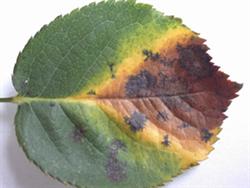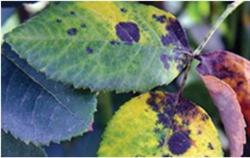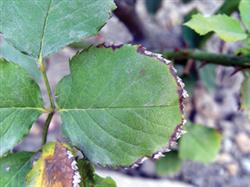Incidence and control measures of black spot of rose

Black spot of rose is a worldwide disease, which is widely distributed and occurs in all areas where rose is cultivated. In recent years, the disease is serious in many provinces and cities in China. The occurrence of black spot can cause the early defoliation of rose, affect the growth of rose and the survival rate of branch cutting, and reduce the ornamental and economic value. Black spot disease can also harm roses, roses and other rose plants. Symptoms: black spot mainly harms the leaves of rose, but also the petiole and twigs. The disease spot on the leaf is round or nearly round, dark brown, and the edge is radiate; on the petiole and twig, the disease spot is strip-like, and the edge is not obviously radial. Disease characteristics: the disease began in mid-May every year in Beijing, the disease was serious in the rainy season from July to August, the disease tended to be alleviated in October, and stopped developing in the first ten days of November. Most of the disease occurred in April in southern China, the disease was serious in the rainy season from June to July, gradually alleviated in August, developed again from September to October, and stopped in November. The wet and rainy environment is conducive to the occurrence and prevalence of diseases. In general, the rainy season is early, the rainfall is large, and the number of rainfall is large, so the onset period is earlier, the spread is fast, and the harm is serious. Greenhouse ventilation is poor, humidity is high, cutting density is too high, resulting in poor ventilation of high humidity conditions, rose disease is serious. Prevention and control methods 1. Reduce the source of infection. Thoroughly remove dead branches and leaves in autumn, and cut off diseased branches in combination with winter pruning; spray 1% copper sulfate solution during dormancy to kill the source of overwintering bacteria on diseased remains. 2. Improve the cultivation and management measures. It is best to plant susceptible varieties at intervals with resistant varieties to play an isolated role in order to reduce the spread and spread of the disease. Pay attention to the plant spacing during cultivation, should not be too close, the daily watering time should not be too late, should not be watered from above, should be irrigated from the root, so as to avoid water droplets splashing so that the spores of the pathogen can spread to the adjacent leaves. Greenhouse should pay attention to ventilation, control humidity and reduce disease conditions. Reasonable maintenance and management is helpful to enhance plant disease resistance. 3. During the onset of the disease, spray 80% Dysen zinc wettable powder 500x liquid, or 70% methyl thiophanate wettable powder 1000 times liquid, or 50% carbendazim wettable powder 500x 1000 times liquid, or 75% chlorothalonil wettable powder 1000 times liquid, or lime small amount Bordeaux solution (because rose is sensitive to lime), the control effect is better. You can also choose fungicides such as benzoate, carbendan and mancozeb, which can be sprayed once in 7-10 days. In order to prevent the emergence of drug resistance of pathogenic bacteria, agents should be used alternately. 4. Disease-resistant varieties and disease-resistant rootstocks should be selected in production to eliminate susceptible varieties.
- Prev

Occurrence and control of black spot of rose
Rose and rose black spot disease is a worldwide disease, which is common in China, which is thought to damage leaves mainly, followed by petiole, leaf tip, young shoots and pedicels. The disease is more serious in the south and north, and the disease makes the leaves yellow and fall early. When the disease is serious in April and May and late August and September in summer, the leaves can all fall, making the rose.
- Next

Identification and control of black spot of rose
The disease is common and does serious harm, resulting in a large number of fallen leaves of rose and huge losses. The pathogen is a fungus of the genus Actinomyces. First, at the beginning of symptom recognition, brown radial plaques appear on the leaf surface, and then gradually enlarge into round or subcircular spots with a diameter of 412 mm.
Related
- Fuxing push coffee new agricultural production and marketing class: lack of small-scale processing plants
- Jujube rice field leisure farm deep ploughing Yilan for five years to create a space for organic food and play
- Nongyu Farm-A trial of organic papaya for brave women with advanced technology
- Four points for attention in the prevention and control of diseases and insect pests of edible fungi
- How to add nutrient solution to Edible Fungi
- Is there any good way to control edible fungus mites?
- Open Inoculation Technology of Edible Fungi
- Is there any clever way to use fertilizer for edible fungus in winter?
- What agents are used to kill the pathogens of edible fungi in the mushroom shed?
- Rapid drying of Edible Fungi

